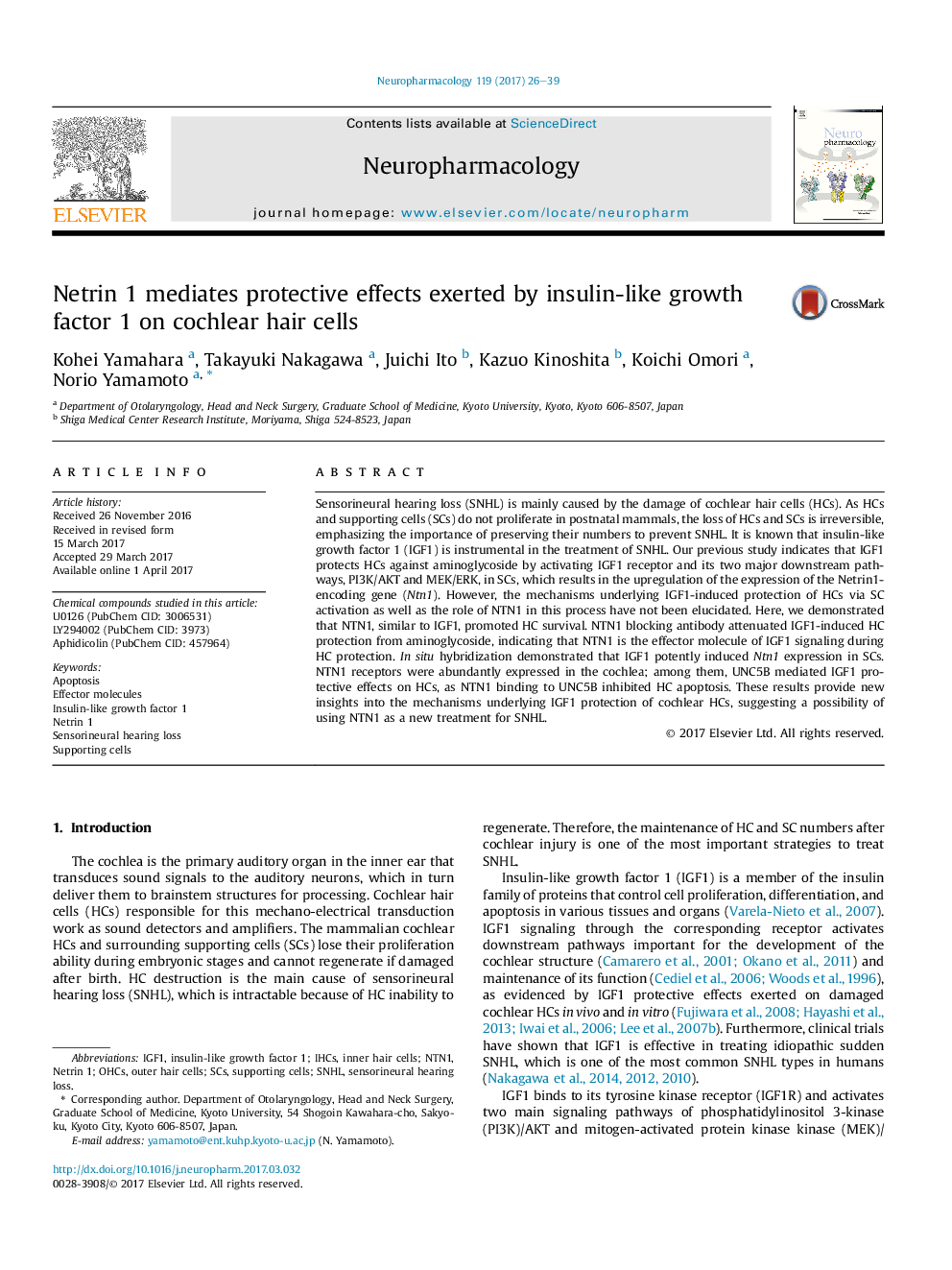| Article ID | Journal | Published Year | Pages | File Type |
|---|---|---|---|---|
| 5548906 | Neuropharmacology | 2017 | 14 Pages |
â¢Netrin1 protects cochlear hair cells from aminoglycoside via the Unc5b receptor.â¢Netrin1 and Unc5b mediate the protective effect of IGF1 towards cochlear hair cells.â¢Netrin1 inhibits apoptosis of hair cells caused by aminoglycoside.
Sensorineural hearing loss (SNHL) is mainly caused by the damage of cochlear hair cells (HCs). As HCs and supporting cells (SCs) do not proliferate in postnatal mammals, the loss of HCs and SCs is irreversible, emphasizing the importance of preserving their numbers to prevent SNHL. It is known that insulin-like growth factor 1 (IGF1) is instrumental in the treatment of SNHL. Our previous study indicates that IGF1 protects HCs against aminoglycoside by activating IGF1 receptor and its two major downstream pathways, PI3K/AKT and MEK/ERK, in SCs, which results in the upregulation of the expression of the Netrin1-encoding gene (Ntn1). However, the mechanisms underlying IGF1-induced protection of HCs via SC activation as well as the role of NTN1 in this process have not been elucidated. Here, we demonstrated that NTN1, similar to IGF1, promoted HC survival. NTN1 blocking antibody attenuated IGF1-induced HC protection from aminoglycoside, indicating that NTN1 is the effector molecule of IGF1 signaling during HC protection. In situ hybridization demonstrated that IGF1 potently induced Ntn1 expression in SCs. NTN1 receptors were abundantly expressed in the cochlea; among them, UNC5B mediated IGF1 protective effects on HCs, as NTN1 binding to UNC5B inhibited HC apoptosis. These results provide new insights into the mechanisms underlying IGF1 protection of cochlear HCs, suggesting a possibility of using NTN1 as a new treatment for SNHL.
Graphical abstractDownload high-res image (364KB)Download full-size image
